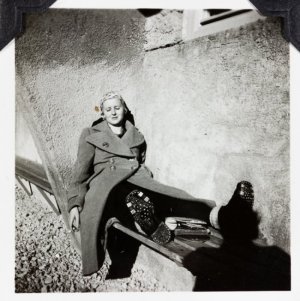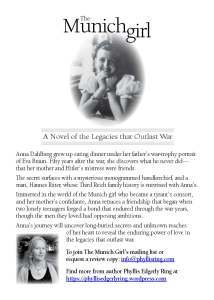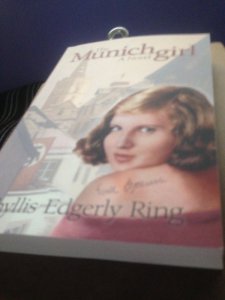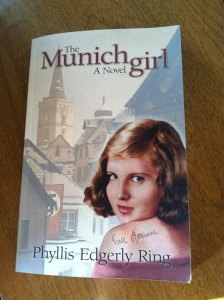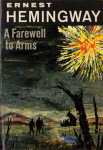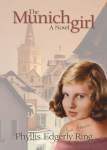Phyllis Edgerly Ring's Blog, page 14
August 17, 2016
Thank you, Let Them Read Books blog
Blogger (and gifted cover designer) Jenny Q. kindly included a guest post of mine at her Let Them Read Books historical-fiction blog last week.
The post’s theme came back to the same focus I find so much response about The Munich Girl does:
“The question people asked me at the outset is the same one they still ask: ‘Why Eva Braun?’
“The story’s goal has never been to try to exonerate or ‘redeem’ her, or how she is perceived.
She simply makes a fine motif for examining how people, especially women, suppress our own lives, and what forces and factors lead us to do that. 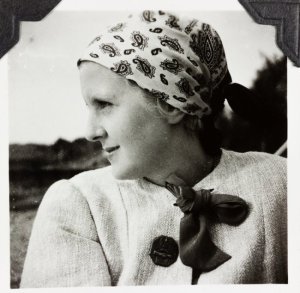
“She also offers a way to look at the reality that human beings are complex. She clearly had a conscience, and acted on it, and, like most of us, tried to make good choices — choices to serve good — when she could.
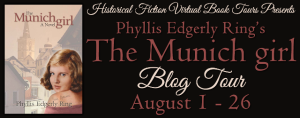 “She also made ones that served neither herself nor others very well. Do we negate or devalue the contributions that someone makes because they also do things that are misguided, ill-advised, or even personally destructive? Do we not all share this same complexity in experience? These are themes I wanted to explore.
“She also made ones that served neither herself nor others very well. Do we negate or devalue the contributions that someone makes because they also do things that are misguided, ill-advised, or even personally destructive? Do we not all share this same complexity in experience? These are themes I wanted to explore.
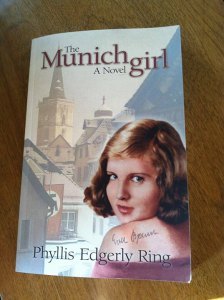 My thanks to Jenny, and to commenter Eric, who has read The Munich Girl and describes it as a story “about the human spirit, survival, friendship, love, betrayal, discovery and denial.”
My thanks to Jenny, and to commenter Eric, who has read The Munich Girl and describes it as a story “about the human spirit, survival, friendship, love, betrayal, discovery and denial.”
You can find my guest post at the Let Them Read Books Blog:
http://letthemreadbooks.blogspot.com/2016/08/blog-tour-guest-post-munich-girl-by.html#comment-form
More about The Munich Girl: A Novel of the Legacies that Outlast War:
https://www.amazon.com/Munich-Girl-Novel-Legacies-Outlast-ebook/dp/B01AC4FHI8/


August 11, 2016
Meeting The Munich Girl

Eva Braun in the late 1930s.
I’m meeting some awfully nice book bloggers this month as a result of my participation in a blog tour.
First up was Dianne Ascroft, an author originally from Canada, now in the UK. Her novel, Hitler and Mars Bars, the story of a German boy’s journey to manhood in war-torn Germany and post war Ireland, is now in my reading pile as eagerly anticipated reading.
Dianne hosted my novel in an interview, Meeting the Munich Girl, in which she asks creative questions. Here are a few that deal very directly with the experience of writing historical fiction:
How closely did you stick to the historical facts? If you used them loosely, how did you decide whether to deviate from them?
PER: As closely as possible when it came to information from the WWII era and the years that preceded it in Germany. As my husband says, if the characters ride a train on a certain line at a certain time of day, there had to really be one. There’s a lot of factual information in The Munich Girl and I’ve heard from readers that it can be hard to know where the factual leaves off and the fiction begins. It’s easy to know where: in the emotional lives of the characters, including those people that history remembers. That’s where my own attempt to read between the lines of daily life watched for the signs of interior life I could recognize and convey as the story revealed itself. 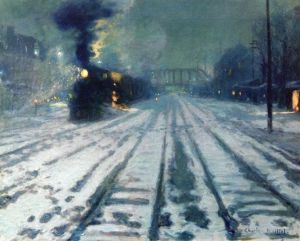
In an historical novel you must vividly re-create a place and people in a bygone era. How did you bring the place and people you are writing about to life?
PER: This was one of the most delightful parts, for me, as I spent extended spans of time in various locales in Germany that are a part of the story. Also, in the time I spent poring over Eva Braun’s photographs and films, I got to know both the interiors and exteriors of the settings as they appeared during the 1930s and ‘40s. A fun element of research was what has become, for me, a growing collection of vintage postcards that show scenes from that era in many of the settings of the story.
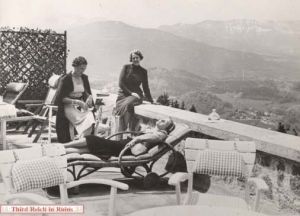
Eva Braun and friend’s at Hitler’s Berghof. Image courtesy of ThirdReichinRuins.com.
There often seems to be more scope in historical novels for male characters rather than female characters. Do you prefer to write one sex or the other. And, if so, why?
PER: I love stories where there’s a balance that hints at what a world with equality might look and feel like. This novel has a lot more scope for female characters. At its heart is a friendship between two women, one of whom was a megalomaniac’s mistress, and the effect their emotional intimacy had in each of their lives, and in the lives of those who came along in a next generation.
You can f ind the rest of Dianne’s interview here:


August 7, 2016
First Impressions – gratefully received
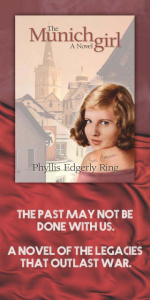 A blog tour for The Munich Girl kicked off at Historical Fiction Virtual Book Tours this week.
A blog tour for The Munich Girl kicked off at Historical Fiction Virtual Book Tours this week.
A big gift right at the outset was the review left for the book at Goodreads by Whitney of First Impressions Reviews:
 “Historical fiction novels that are told in past and present tense can be tricky. If not done right they can be jerky and painful to read.
“Historical fiction novels that are told in past and present tense can be tricky. If not done right they can be jerky and painful to read.
“This was not the case in The Munich Girl. Peggy’s diary entries were applied seamlessly blending past with the present. I yearned to enter the streets of 1940s Germany and discover the meaning behind a simple portrait and view the forging of an unlikely friendship. Phyllis Edgerly Ring has written a superbly researched novel of a historical figure whose’ story is impeccably told.”
https://www.goodreads.com/review/show/1712583125?book_show_action=true&from_review_page=1
Find more about the book at:
https://www.amazon.com/Munich-Girl-Novel-Legacies-Outlast-ebook/dp/B01AC4FHI8/


August 2, 2016
Finding our place in the family of things
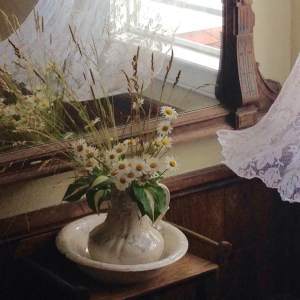
Photo: Image from Star Island, Lesley Fowler
In the experience of writing fiction, I become captivated by place.
Sometimes, it is among the very first of the story’s “characters” to appear.
In the process of writing The Munich Girl, I’ve accumulated four journals and three photo-album-style scrapbooks. I’ve done this last, I suspect, because the best-known of the novel’s characters, Eva Braun, was a passionate photographer.
Yet so many of the images and passages recorded in those journals and albums are about the essence of places.

Alte Rathaus, Wertheim, Germany
I imagine that I’m drawn to the spirit of places, which I have been since my earliest memories (they go back as far as age 3, possibly a little earlier) because, as Antoine de Saint-Exupéry wrote about what the Sahara Desert taught him:
“Every man, every woman, carries in heart and mind the image of the ideal place, the right place, the one true home, known or unknown, actual or visionary.”
Place is an essential element of the story, of course.

Hexen Haus, Wertheim, Germany
As some have said, often in a book’s story, place is also character, or a facet of the story that reveals aspects of character.
An Aboriginal proverb observes:
“We are all visitors to this time, this place.
We are just passing through. Our purpose here is to observe, to learn, to grow, to love … and then we return home. “
Along the way, the places that we pass through have a lot to reveal to us.
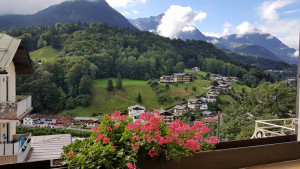
Photo: Berchtesgaden, Germany, David Campbell.
Carl Jung lived nearly half of his life in a home he built in the village of Bolligen located along the northern shore of Lake Zurich, Switzerland. In this place, to which he felt particularly drawn, Jung wrote about his many sensory experiences published in his memoir, Memories, Dreams, Reflections:

Photo: Kehlstein Haus, David Campbell.
“At Bolligen I am in the midst of my true life, I am most deeply myself …
At times I feel as if I am spread out over the landscape and inside things, and am myself living in every tree, in the splashing of the waves, in the clouds and the animals that come and go, in the procession of the seasons …
In Bolligen, silence surrounds me almost audibly, and I live ‘in modest harmony’ with nature.”
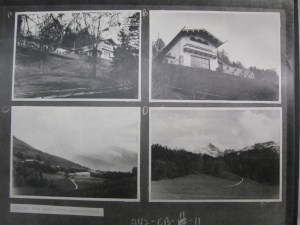
Page from Eva Braun photo album.
In “The Power of Place,” writer Linda Sechrist has written: “Since we personally interpret the qualities, values, and spaces that make a place special in the context of other places, childhood experiences of where we are born and grow up, as well as the places where we spent our childhood summers, are the well of memories from which we most frequently draw.
“This relationship is one that Eudora Alice Welty suggests we, in the words of Nobel Prize-winning author William Faulkner, carry within ourselves as ‘postage stamps of native soil.’
“Welty wrote, ‘It is the memory of this place that nurtures us with identity and special strength and it is to this place that each of us goes to find the clearest, deepest identity of ourselves.’ ” 
In her poem, “Wild Geese,” poet Mary Oliver sums this up eloquently:
Whoever you are, no matter how lonely,
the world offers itself to your imagination,
calls to you like the wild geese, harsh and exciting
over and over announcing your place
in the family of things.
~ from Dream Work by Mary Oliver
Find more about The Munich Girl: A Novel of the Legacies That Outlast War at:
https://www.amazon.com/Munich-Girl-Novel-Legacies-Outlast/dp/0996546987/


July 25, 2016
What an “ordinary” Munich girl reveals
When book blogger Melissa Lee invited me to share a guest post at her blog this week, it was a chance to reflect on the writing and research for The Munich Girl, and some of the things that these uncovered for me.
“While Eva Braun is famous because of someone infamous, this Munich girl came from what would be perceived both then and now as an extremely ‘ordinary’ life. …
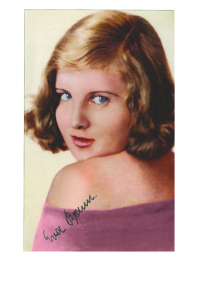 “Lots of assumptions and judgments about her have masked key information that her life could provide about Hitler. Paradoxically, although much of what has been conveyed about her was based on presumed understanding about him, it’s a more complete picture of her that can provide the most accurate view of Hitler.
“Lots of assumptions and judgments about her have masked key information that her life could provide about Hitler. Paradoxically, although much of what has been conveyed about her was based on presumed understanding about him, it’s a more complete picture of her that can provide the most accurate view of Hitler.
“She loved him, I have no doubt. Yet, in many ways, she gave up both her sense of self and of self-determination to ‘prove’ that love, show her loyalty. (Loyalty was very important to Hitler, who trusted so poorly, if at all. But he trusted her.)
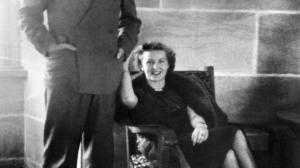 “I think the distorted self-denial she showed is still cultivated in collective culture today in ways designed to keep inequality in place. Many, especially women, give up the freedom of their own wholeness for the sake of proving love, and loyalty. I think the false value this behavior is given is a big part of what allows oppression and repression to continue, along with the imbalance of power that always accompanies them.
“I think the distorted self-denial she showed is still cultivated in collective culture today in ways designed to keep inequality in place. Many, especially women, give up the freedom of their own wholeness for the sake of proving love, and loyalty. I think the false value this behavior is given is a big part of what allows oppression and repression to continue, along with the imbalance of power that always accompanies them. 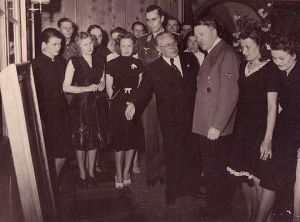
“I suppose it’s natural that people might assume this novel aims to exonerate or redeem Eva Braun, but that’s never been its goal. She came to represent, for me, the many things that we can form conclusions about without ever delving deep enough to uncover the whole story, in order to genuinely find truth. If the story aims to convey any sort of message, it’s that no human being is all good or all bad, and human circumstances are always more complex than they appear. If we’re not willing to accept and understand this, we’re unlikely to learn from history. …”
You can find the entire guest post about The Munich Girl at Melissa Lee’s Many Reads Blog:
http://mlsmanyreads.blogspot.com/2016/07/guest-post-phyllis-edgerly-ring-author.html?spref=fb


July 16, 2016
Mid-year mentions
July marks the eighth month since The Munich Girl published — the sixth, if you count its Kindle version, which appeared around the corner of the new year.
And July is when book bloggers — and I’ve connected with so many wonderful ones since the novel’s release — reach a half-way mark in their reading and book-reviewing year.
Two of them have been especially generous to The Munich Girl, and to me.
Melissa Lee’s Many Reads Blog has shared about the book repeatedly, plus it’s helping Canadian readers learn about and connect with it.
This month, Melissa shared her “Top 10 Favourite Books with Less than 2,000 Goodreads Ratings (in no particular order).”
 I was delighted to see The Munich Girl on her list: http://mlsmanyreads.blogspot.com/2016/07/top-10-tuesday-top-10-books-that-have.html
I was delighted to see The Munich Girl on her list: http://mlsmanyreads.blogspot.com/2016/07/top-10-tuesday-top-10-books-that-have.html
Like Melissa, who is going to host a guest post of mine in the coming weeks, blogger Book Club Mom Barb Vitelli has offered several posts that mention or introduce the book this year, including a very kind and appreciative review.
Recently, one of her posts, “A Quick Look Back at The Good Stuff” included The Munich Girl in the company of some very illustrious works. I’m honored, as I know Barb’s a reader who understands some of the novel’s very deepest intentions, and she read it — and reflected on it – with great thoughtfulness, as Melissa did.
One heart-boosting image from Barb’s post:
Highly Recommended
Olive Kitteridge by Elizabeth Strout
A Farewell to Arms by Ernest Hemingway
The Munich Girl by Phyllis Edgerly Ring
The Hours Count by Jillian Cantor
The rest of Barb’s Book Club Mom post is here:
https://bvitelli2002.wordpress.com/2016/07/11/a-quick-look-back-at-the-good-stuff/
And you can find more about The Munich Girl: A Novel of the Legacies that Outlast War here:
https://www.amazon.com/Munich-Girl-Novel-Legacies-Outlast-ebook/dp/B01AC4FHI8/


July 12, 2016
On the trail of The Munich Girl
 Delightful contributions and correspondence from readers have, once again, helped me make new discoveries about The Munich Girl. Reader response remains one of the biggest gifts of all in sharing a book’s story with the world.
Delightful contributions and correspondence from readers have, once again, helped me make new discoveries about The Munich Girl. Reader response remains one of the biggest gifts of all in sharing a book’s story with the world.
Big thanks to Heather Krishnamurti for: reading the book, writing with kind words to let me know — then taking it with her to Europe, and ALL the way to the top of a mountain and the Kehlstein Haus, high above Berchtesgaden, Germany, so that she could send this photo.
I’m personally rather fascinated with then-and-now photos — the historic ones I pored over during my research, and the ones that readers send me as their own travels follow parts of the book’s trail.
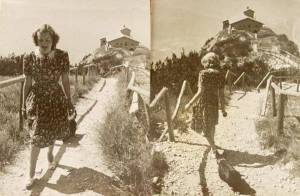 In her photo, Heather is standing quite close to where these two photos of Eva Braun and her dog were taken around 1939 or 1940. The scene is one that’s included in the book’s story.
In her photo, Heather is standing quite close to where these two photos of Eva Braun and her dog were taken around 1939 or 1940. The scene is one that’s included in the book’s story.
Reader Kathy Bailey left a comment recently that feels too thoughtful to let become buried in the obscurity of internet archives.
It’s a response to the question that never stops coming: “Why Eva Braun?” (Or, in the instance of one recent reviewer, “Why this woman?”)
 “Why Eva?” Kathy begins. “Because she is also a representation of Germany, a beautiful country of many good people who were swept along by something they didn’t understand and later regretted.
“Why Eva?” Kathy begins. “Because she is also a representation of Germany, a beautiful country of many good people who were swept along by something they didn’t understand and later regretted.
[Observation entirely my own own: Are we willing to — will we — learn from history ourselves, when and as we find ourselves in similar circumstance?]
“Why Eva?” Kathy continues.
“Because through her, Phyllis explored the many complexities of love. Which is not one-size-fits-all.
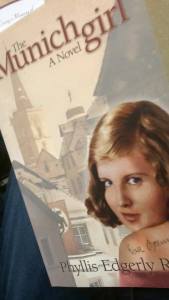 “Why Eva? Because through her we come to understand Anna, who finds the courage to break from an oppressive relationship.”
“Why Eva? Because through her we come to understand Anna, who finds the courage to break from an oppressive relationship.”
Like her country, Eva Braun may not have recognized that the relationship was oppressive.
Or not until it was much too late.
Find more about The Munich Girl, (Kindle version remains discounted this month) here:
https://www.amazon.com/Munich-Girl-Novel-Legacies-Outlast-ebook/dp/B01AC4FHI8/
— And please, keep sending your photos and thoughts.


July 5, 2016
Welcoming the wit to win
Fifty-six years ago, in a little German village, my older sister, then a high-school sophomore, taught these words of Edwin Markham to me:
He drew a circle that shut me out —
Heretic, rebel, a thing to flout.
But love and I had the wit to win:
We drew a circle and took him in!
~ Edwin Markham, Outwitted
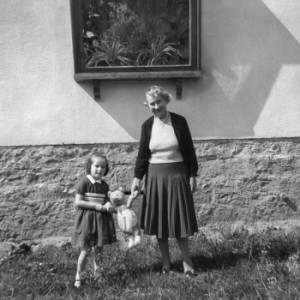 At that time, I looked much the way I do in this photo that shows me outside the house where we lived. I’m accompanied by my British grandmother and my teddy bear.
At that time, I looked much the way I do in this photo that shows me outside the house where we lived. I’m accompanied by my British grandmother and my teddy bear.
Many evenings, my parents and I would climb the hillsides above that village to reach the table-like land at the top, where there were fruit trees like the ones in the photo above. It was a LONG climb, especially on short legs. The reward was the sweet fruit waiting at the end of the climb, and the sunsets visible from that vantage point. That’s a metaphor that has stayed with me for life.
Until my sister reminded me of this poem recently, I doubt I’d given it concrete thought for years. Yet when I “heard” it again, something began to play inside me like a song. All through the time and distance I’ve traversed since that German summer, this has traveled with me, setting the roots of the tree of my life into the soil that grew my view of myself, always, as a citizen of the world.
 I’ve been fortunate enough to return to this village several times with my husband, and even once with our grown children. Although my family lived there a bare eight months, I realize now that the war-weary Germans there who showed me such kindness insured that it’s at the heart of all I’ve loved about their country ever since.
I’ve been fortunate enough to return to this village several times with my husband, and even once with our grown children. Although my family lived there a bare eight months, I realize now that the war-weary Germans there who showed me such kindness insured that it’s at the heart of all I’ve loved about their country ever since.
I also know today that because my WWII-veteran father could appreciate Germans, my British mother, injured in the Blitz, could forgive them, and my sister could be so determined to teach me the principle of oneness, my pathway of becoming a Baha’i no doubt began growing from the seed of my life that very summer.
 Because so many different people were willing to care about me, and about showing an open heart, I would come to recognize instantly, as though it were a song already inside me, the truth of these words:
Because so many different people were willing to care about me, and about showing an open heart, I would come to recognize instantly, as though it were a song already inside me, the truth of these words:
Bahá’u’lláh has drawn the circle of unity, He has made a design for the uniting of all the peoples, and for the gathering of them all under the shelter of the tent of universal unity. This is the work of the Divine Bounty, and we must all strive with heart and soul until we have the reality of unity in our midst, and as we work, so will strength be given unto us. ~’Abdu’l-Bahá (Paris Talks)


July 1, 2016
Love is the true nourishment

PHOTO: https://www.etsy.com/shop/DKirkupDesigns
GLEANINGS FOUND HERE AND THERE:
Bahá’u’lláh taught that hearts must receive the Bounty of the Holy Spirit, so that Spiritual civilization may be established.
For material civilization is not adequate for the needs of mankind and cannot be the cause of its happiness.

PHOTO: https://www.etsy.com/shop/DKirkupDesigns
~ ‘Abdu’l-Bahá
Most human violence is neither necessary nor is it inherent, genetic, “animal” survival skill. We have the ability, and I believe an evolutionary mandate, to stop violence.
The best way to stop it is to realize, as I emphasized in the last chapter of Biology of Belief, that we are spiritual beings who need love as much as we need food.
~ Bruce Lipton


June 25, 2016
Why Eva Braun?: Guest Post by Phyllis Edgerly Ring, Author of The Munich Girl (with giveaway)

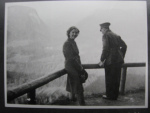
I’m really looking forward to reading The Munich Girl by Phyllis Edgerly Ring in a few months. Those who know me know how fascinated I am with stories about World War II, and I admit that I…
Source: Why Eva Braun?: Guest Post by Phyllis Edgerly Ring, Author of The Munich Girl (with giveaway)



